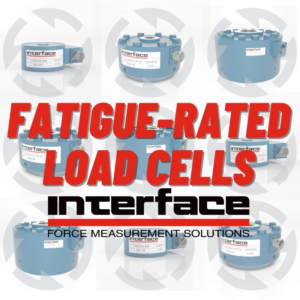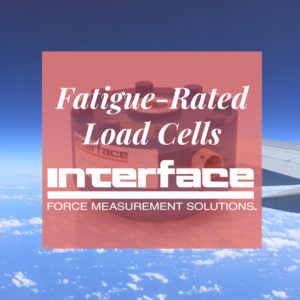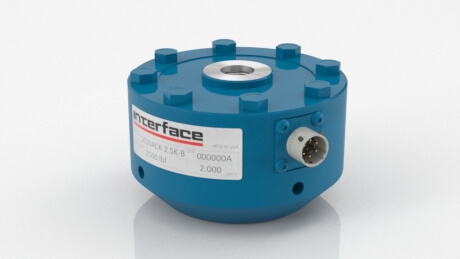Interface Specializes in Fatigue-Rated Load Cells
 Often test protocols require a fixed load plus a dynamic load to be applied to a test sample simultaneously. Interface Fatigue-Rated Load Cells are well suited for this requirement. Fatigue-rated is a specification that defines a special class of load cell design and construction used for repetitive cycle and fatigue testing.
Often test protocols require a fixed load plus a dynamic load to be applied to a test sample simultaneously. Interface Fatigue-Rated Load Cells are well suited for this requirement. Fatigue-rated is a specification that defines a special class of load cell design and construction used for repetitive cycle and fatigue testing.
Interface has specialized in fatigue-rated load cells and their applications since our founding in 1968. The stringent discipline that is necessary to produce true fatigue-rated load cells, with consistency, is why Interface is known for this specialized load cell design and construction.
Manufacturing these special types of load cells, we can proudly state there is no record of reported fatigue failure for Interface Fatigue-Rated Load Cells used within their specified ratings. Interface fatigue-rated load cells have a given service life of 100 million fully reversed, full capacity loading cycles. It’s why reliability, durability, and quality rank these types of load cells as best-in-class for fatigue and cycle testing.
The use of fatigue-rated load cells and data logging instrumentation are used for testing materials, parts, or assemblies for weakness, and often ultimately to destruction. These types of fatigue tests are valuable to have an accurate record of the forces applied at every moment of a test to analyze stresses, identify fatigue and potential failure risks.
INTERFACE FATIGUE-RATED LOAD CELLS:
- 1000 Fatigue-Rated LowProfile® Load Cell – Model 1000 series is a fatigue-rated low profile load cell with 300% safe overload, extremely low moment sensitivity of 0.1%/in and a higher fatigue life. Capacities give you options to measure 1 pound (4.45N) and up to 1 million pounds (4500kN) of force.
- 1000 High Capacity Fatigue-Rated LowProfile® Load Cell – With many variants and configurations our fatigue-rated load cells provide up to 100 million fully rendered cycles. The gaged sensors in every load cell are individually inspected, tested, and certified to meet our rigid standards.
- 1500 Low Capacity LowProfile® Load Cell – The Interface Model 1500 is a fatigue-rated unique LowProfile Load Cell designed for low capacity applications where low sensitivity to eccentric load is important.
Each fatigue-rated load cell model grouping also has numerous capacities and variations, including additional bridge options. All product variations, capacities, customization options and availability are online. There are possibilities to have engineered-to-order made products and customized solutions, as with all Interface manufactured load cells.
When passing fatigue testing is critical to the success of an assembly, piece of equipment or product, engineers and manufacturers rely on Interface Fatigue-Rated Load Cells. Our fatigue-rated load cells are used by most manufacturers of test machines, aircraft, spacecraft, auto and transportation vehicles, and various devices and industrial systems.
Here are a few fatigue-rated applications that demonstrate different use cases:
Furniture Fatigue Cycle Testing App Note
Bike Frame Fatigue Testing App Note
Aircraft Wing Fatigue App Note
Prosthetics Load and Fatigue Testing App Note
Additional reading on this subject can be found here in the post, Considerations for Fatigue-Rated Load Cells. If you are exploring fatigue-rated load cells or products for cycle testing, contact our application engineers to answer questions and ensure you get the right product for your testing needs.



